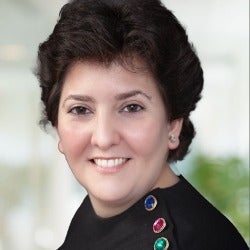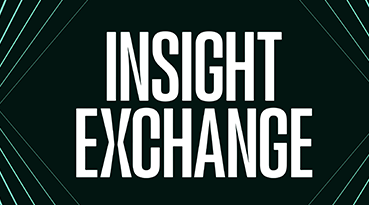
Subscribe to Insight Exchange on Apple Podcasts, Spotify, Google and Amazon Music and Audible for the latest episodes.
L.E.K. Consulting conducted the annual European Brand Owner Packaging Survey with over 600 participants across the food, beverage, beauty and personal care, health and wellness, household, pet, and consumer electronics sectors.
Participants spanned Germany, the U.K., France, Italy, Spain and Poland. Sampling was conducted in November and December of 2022, with final results delivered in January 2023.
In this episode, we will discuss:
- The key takeaways from this survey
- The impact on sustainability initiatives
- The implications for packaging companies
To provide insights on these topics, we hear from Karin von Kienlin, Partner in L.E.K. Consulting's Munich office; Seonag Doherty, Senior Manager in L.E.K. Consulting's Munich office; Philippe Gorge, Partner in L.E.K. Consulting's Paris office; and Carmen Morales Garcia, Partner in L.E.K. Consulting's Madrid office.
L.E.K. Consulting is a registered trademark of L.E.K. Consulting. All other products and brands mentioned in this document are properties of their respective owners. © 2023 L.E.K. Consulting
-
Read the full transcript below
Host 1:
Welcome to Insight Exchange, presented by L.E.K. Consulting, a global strategy consultancy that helps business leaders seize competitive advantage and amplify growth. Insight Exchange is our forum dedicated to the free, open, and unbiased exchange of the insights and ideas that are driving business into the future. We exchange insights with the brightest minds of the day, the most daring innovators and the doers who are right now rebuilding the world around us.
Host 2:
Hello everyone and welcome. L.E.K. Consulting conducted the annual European Brand Owner packaging survey with over 600 participants across food, beverage, beauty and personal care, health and wellness, household and pet, and consumer electronics participants spanned Germany, the UK, France, Italy, Spain, and Poland. And sampling was conducted in November and December of 2022 with final results delivered in January 2023. And in this episode we will discuss the key takeaways from this survey, the impact to sustainability and the implications to packaging companies and to provide insights on these topics we have several L.E.K. consultants today. Everyone please take a moment and introduce yourselves.
Karin von Kienlin:
Hi, my name is Karin von Kienlin. I'm a Senior Partner in L.E.K.'s Munich office and I've been spending the last 30 years on growth strategy and transaction support across the industrial space, which includes quite a lot of packaging companies.
Seonag Doherty:
Hi, I'm Seonag Doherty. I am a Senior Manager in L.E.K.'s Munich office together with Karin and I focus on growth strategy in the industrials practice and more recently have been concentrating on sustainability and packaging topics.
Philippe Gorge:
I'm Philippe Gorge partner in the Paris office. I'm a consumer specialist and I focus on beauty, health and wellness.
Carmen Morales:
I'm Carmen Morales partner in the Madrid office. I'm part of the industrials practice with a focus on packaging.
Host 2:
Super. Thank you all. Appreciate that. Let's, let's do this. To start out, why don't you give us some understanding of the purpose of this survey. Give us some insight on what you were looking to understand.
Seonag Doherty:
Sure. The survey was quite extensive in surveying brand owners that have decision making responsibility for packaging in their respective countries. And we took a sample of 600 respondents across six different countries throughout Europe. And what we were looking to understand was really uncovering a range of topics mostly related to trends and how decision making is evolving and how packaging will be changing in the next couple of years compared to the last few years. Some example of that is we've looked to understand what the evolving needs of brand owners are in terms of the material that they're using, the amount that they're spending on packaging, the innovation that they're bringing to packaging, and also having a look at the impact of very relevant trends. So taking sustainability, taking an increase of e-commerce and also most relevant in this current macroeconomic environment, the impact of economic headwinds on some of that decision making as well.
Host 2:
Great. So let's talk more about trends. What were the actual trends in brand performance and how did brand owners respond to them during and after the COVID years?
Karin von Kienlin:
If you think about it, 2022 was labeled as the year of PMA crisis and there have rarely been years that have seen such a lot of change and shocks to the system. Starting with the war in Ukraine, still COVID, but then also economic related supply chain issues, then rampant inflation, interest rate increases and so on.
So when we did the work at the end of last year, we were really curious about how brand owners are actually looking at this and what the differences are by segment or country or even if you compare Europe to the US for instance. And I think some of the trends that are emerging are actually quite encouraging.
And one of the big surprises in Europe was really that brand proliferation has been continuing throughout. So you know might have expected, oh, with all the headwinds people are cutting down the number of SKUs per primary brand and so on. But actually overall the picture is pretty positive. Now that has also been supported by statements of 40% saying that they have new brands and relaunch brands, and that compares to say 25% in the US. So quite marked difference, but there's also been reference to promotional activities and short runs who are growing.
Now of course the economic headwinds have shown some impact. So 70% of the brand owners said yes, their customers are sensitive to the recession and they're looking for substitutes, they're looking to trade down. But actually in the last year they claim that they've on average gotten 10% price increase through, which to some extent is all sort of inflation and it does not mean expanded margins quite the reverse, but at least some of that went through. And their expectation is that for the next year, 13% could be passed through with that material impact on volumes. However, they do see on average about 7% trading down. So they are under pressure and they are worried about the costs of all their input factors including packaging.
Now against that backdrop, it's probably quite positive that 70% still think that they're going to be spending more on packaging compared to last year, even though not that much more. So we're talking about on average 1.9% versus 3.6% going forward, but only 5% actually said that they're expecting to spend less and that's mainly because of some cost reduction programs and so on. So of course all the packaging converters are also under pressure given raw material price increases and there are some cost pressure to be expected, but by and large there is quite a bit of opportunity here.
Host 2:
Any other trends in packaging spend or R&D, material selection and are there any other ways that brand owners are adapting to them?
Karin von Kienlin:
Yeah, so I think the key thing I would point out is really that there are a number of opportunities related to aesthetics and design. So when we asked people specifically around when do they change packaging materials and selection or what's driving new designs, they said, well, either it's to improve competitiveness and aesthetics, or it is to save cost, or it's for sustainability reasons. So these are quite important drivers of change and should be taken into account.
I think there's also an interest in recycled content. So recycling actually was mentioned by a third as a potential area of investment and accessibility of sustainable materials is actually quite important to them. And last but not least, I mean there's also quite a bit of interest in smart packaging, so around a number of drivers and e-commerce packaging, not surprisingly has thrived throughout COVID and we still see quite a bit of catch up in Europe compared to the US in terms of developing new formats and tailoring the packaging to specific e-commerce propositions.
Host 2:
Terrific, thank you. Let's talk more on sustainability. What are the current trends and the actions being taken by brand owners to achieve more sustainability in packaging?
Karin von Kienlin:
On sustainability generally, maybe the first thing worth pointing out is that 95% of brand owners actually do have sustainability goals and there are different degrees to which they think they'll get there over the next two to five to 10 years. But it's absolutely clear that sustainability is a big topic and the expectations of all the suppliers are actually to help with fulfilling those pledges. So that's number one. I think originally sustainability was about carbon footprint reduction and less emissions and less energy consumption, less water consumption and so on. But it's really actually started hitting primary packaging in quite a big way. And so about 30 to 40% of brand owners are expecting quite big increases in design for recycling, using recycled content, looking at compostable materials and also looking at recycling per se. So these are things that converters really need to be on top of in terms of providing new product opportunities to brand owners.
Host 2:
Okay. Seonag, what were the specific differences across Europe in terms of end markets worth calling out?
Seonag Doherty:
We've surveyed quite a broad scope of various end markets from household and pet, to consumer electronics, to beauty, health and wellness. And as you might imagine in certain aspects and categories, the results differ rather significantly among end markets. And I'd call out two areas in particular. One has to do with the sensitivity to recessions and how the various end markets are in terms of resilience. And the other piece has to do with difference in packaging trends between those end markets. So I'll start with the former. In terms of resilience and sensitivity to recessions, we notice that both beverage and household are more sensitive to recessions than, for example, the end markets health and wellness and food, being least sensitive, which when you think about it, isn't that surprising since health and food products are more consumer staples, so typically demand for those products doesn't change dependent on the economic cycle, whereas beverage and household, they have much more consumer discretionary products, so could be characterized by demand, which is more elastic to price.
And so brand owners within beverage for example, indicated a very high degree of price sensitivity and also noted that there's a large amount of substitute products, meaning that when the price of one product increases significantly, they could simply swap down and increase purchasing of another product. So in that sense it was much more reactive to economic headwinds. And this also then limits the ability of brand owners to pass on cost increases that they've been experiencing over the last years. As supply chains tighten, as materials become more constrained, and whenever you compare with other end markets like health and food products, we're not seeing that trend as much.
I think the other important piece to call out in terms of looking at significant differences between end markets are differences in packaging trends. And Karin mentioned a few moments ago that one of the elements that we were looking at from the packaging survey were differences in smart packaging and demand for different smart packaging features. And this also differed rather significantly across end markets, but also in line with expectations, right? So if you look at the food end market for example, as you might imagine, there is a much higher use of freshness indicators, which should be quite calming as a consumer that your meat and dairy products which are prone to spoilage, would have an indicator of the degree of freshness, versus not. Whereas electronics, for example, was an end market that focused more on security features in their packaging and traceability features as well. And I think another interesting smart packaging feature to call out is the consumer engagement features. So those would be for example, QR codes that you see on packaging that can be scanned and it gives the brands a chance to interact with their customers and engage with them beyond just what's seen on the shelf. And we saw these kind of consumer engagement features much more prevalent in beauty and personal care end markets as well as household.
Host 2:
Thank you so much, Seonag. All right, let's go to you Felipe. What were the highlights to note in beauty and personal care?
Philippe Gorge:
Well, I think there are two elements that are inherent to the beauty industry compared to other consumer goods segments. First, the beauty industry is all about customer experience, right? Product must appeal to most of the senses, touch, sight, and smell. The visual appeal of the product is essential and must catch the eye of the consumer and stand out from competition.
This is why packaging is so central for beauty brands, much more than in other consumer verticals. In the survey we note that 91% of respondents in the beauty sector consider packaging to be highly important, compared to 83% in other segments.
Second, beauty is very much about the animation of the product line. Brands are constantly launching new products or refreshing their existing product portfolios, which drives traffic to the store or website. This is something central to the beauty category and contrasts with other industries. This translates into significant and frequent investment in packaging.
If you look at beauty brands and their hot topics, sustainability is clearly at the top of the list and it's something that's reflected in most of their corporate communication as luxury groups and brands set ambitious targets, as mentioned by Karin at the beginning of the discussion. It's interesting to note that currently the beauty industry is not the most advanced in terms of packaging sustainability commitments when measured against current sustainable packaging spending. Indeed, despite the commitment of major brands to transform their portfolios, the large scale adoption in the market is quite slow, but this is likely to change in a near term, creating opportunities.
The priorities of beauty brands stated in the survey relate to first continue to reduce packaging weight, which is something that they have been engaged over the last decade. Second, continue their efforts on eco-design / eco-conception. And third, continue to favor biodegradable and recyclable materials to produce their packaging. This translate into a critical risk for suppliers who are less advanced in sustainability issues, as brand owner reported that they were willing to switch vendor to reach their targets.
Finally, on a lighter note, as mentioned by Seonag, smart packaging is gaining popularity as it's seen as a great way to engage customers by pointing them to branded or educational content and how to use product and incorporate them into their beauty routines.
Host 2:
Thank you, Philippe, let's go to you Karin. How did Germany differ from other European countries and why was that do you think?
Karin von Kienlin:
I think the most surprising thing that we found in Germany was that the share of sustainable packaging in Germany was fairly low compared to other countries and that in fact, UK came out as a bit of a champion on that front, both in terms of target setting but also in terms of percentage of goals fulfilled and all the sort of different activities around that. The reason it surprised us was that if you look at secondary sources, and certainly quite a lot of the experience we have with the German brand owners and packaging industry, A, regulation is pretty strict and arguably driving quite a lot of that early. Secondly, the German consumer is super eco-friendly and also a recent survey said that the German consumer is even more willing than the UK consumer to spend more on sustainable products. Thirdly, that's also translated into quite a lot of statements of German brand owners.
We think what's going on here probably has to do with the fact that Germany has already moved along quite a number of initiatives. So for instance, if you think about deposit schemes and recycling and so on, they're actually doing relatively well. And so that could be one of the reasons why in terms of what's the top priority for next year and the year after, it's not necessarily sustainability, it's come down a little bit.
Having said that, one other interesting finding was that Germany seems to be the most positive on packaging spend and packaging R&D. So I mean the difference to the European average is not massive, but it's above it. And also they're more confident than other European countries in terms of passing on price increases to consumers. So there seems to be a little bit of buffer in terms of pricing up and last, but at least I'd call out e-commerce as an opportunity because even though Germany has a pretty high share of an e-commerce packaging across European countries, it's still the one that doesn't have as many e-commerce specific formats and we think there might be opportunity for catch up.
Host 2:
Okay. Let's travel over to France and the UK. So Philippe, what were the key observations on how brand owners differed from the European average and what do you perceive the reasons for this to be?
Philippe Gorge:
Perhaps there are three things worth noting.
First, in all the countries surveyed, the prevalence of short series is increasing, with France especially showing the fastest expected future growth of the countries in the sample.
Second, when it comes to future packaging investment, France and the UK are the countries where respondents are most optimistic about spending on packaging over the next two years.
Last, in terms of sustainability, the UK is the country that currently invests the most in sustainable packaging with 31% of its total packaging spend made in sustainable packaging. While France is 10 points below. This could be related to the introduction of restrictive plastic and packaging tax legislation in Spain, the UK and Italy in 2022-23, which is pushing brands to switch to sustainable packaging. Similarly, the UK is expected to continue to invest heavily as respondents expect sustainable packaging to account for more than 42% of their packaging spend by 2024, compared to 30% in France.
Host 2:
Thank you. And Carmen, on the Spanish and Italian brand owners, can you offer any specific observations of differences?
Carmen Morales:
Sure. Let's start with the Spanish market first, and Spain is the second country with more sustainability conscious brands in Europe after the UK. Although in Spain there is a lot of use of plastics, this is actually with a significant share of recycled plastic and with the new legislations entering into force in 2023, our new packaging tax legislation is expected to actually increase the sustainability consciousness of the country. Additionally, Spanish brands, as Italian, typically more likely to keep their SKU portfolio flexible and does require a higher share of [inaudible 00:21:50], smaller batches that allow the for higher flexibility. Some of this could be linked particularly with strong promotional activities, especially in Spain. If you look at historically, Spain has had a higher proportion of seasonal promotional SKUs use is nine compared to five of the rest of Europe, which is substantially higher. And it did look at previous previous year, and Spain is the only country that has basically increased significantly in the SKUs due to recessions, especially in 2020.
Additionally, brand owners are expected to maintain or reduce their restock levels in the coming years, which is a positive sign going forward. Brick and mortars is very important in this finance market. There is a strong digital retail channel, particularly in e-commerce and marketplaces. For instance, for food companies, and this is mainly explained through a high daily internet usage by the population. With all of these, based on the survey, 85% of the brands are expected to maintain their suppliers. This is the largest shares in all of Europe, and this is mainly linked to the five that actually, and the spend on packaging is expected to grow the least of the country surveyed.
If we move into Italy, Italy's similar but has some particularities. So for instance, it is modern, it is less sustainability conscious than Spain. But with the new legislation, this is expected to improve. There's a high SKU volatility, being the highest of all Europe with 45% of their SKUs used being SKUs that are updated, reversed or retired. Brand owners as in Spain are less likely to change packaging compared to other northern European countries. This is also supported by the lowest change in spend on packaging R&D, for primary brands top SKUs over the last two years.
Half of the respondents did not change or even reduce their spend on packaging R&D over the last two years. If you look at the channels, there's a high reliance on brick and mortar. This is quite driven by their traditional importance of farming shops, local specialized source and food markets. So summarizing survey results indicates that the Italian brand owners are seeking packing manufacturers able to serve brick and mortar channels and volatile SKUs portfolio, with a lesser importance of being able to regularly make changes to packing. Going forward sustainable materials might grow in importance with the dynamic relation.
Host 2:
Very good, thank you. Tell us what were Polish brand owners perspectives compared to Western European perspectives and what could be drivers of differences?
Seonag Doherty:
Sure. Well, when looking at the results of Polish brand owners compared to those results in Western European countries, it's important to keep in mind the relative brand and company sizes that we're dealing with. So actually whenever you look at the Polish brand owner respondents, most of them, in fact two thirds, came from micro brands which had company revenues less than 99 million. However, brands in the other five countries were much more evenly represented across company tiers, some up to even the 10+ billion revenue mark. So that can be driving some of the differences here and it's important to keep in mind when we talk about some of those differences.
Now in terms of specific differences in the Polish respondents, one of the areas that very clearly stood out is that Polish brand owners report a very stable brand SKU portfolio. In fact, compared to other countries, and unlike Spanish brands as Carmen just shared with us, Poland actually has the highest share of SKUs that remained the same historically versus being refreshed or updated or new SKUs being introduced. And because of this higher stability, actually what we're seeing is that the Polish brands have the highest proportion of long runs for their packaging format. And actually this contrasts with other, for example, French and Italian brands that have, on the other hand the highest portion of short runs, but that's aligned with their more flexible SKU portfolios.
Another aspect that stood out among respondents from Poland was the level of macroeconomic exposure. So in fact, Polish brand owners have reported over the last two years spending less on packaging R&D compared to other European countries, and this could be driven by macroeconomic factors. When we compare with some of the larger economies like Germany and the UK, we would expect, and that's in line with the results that Polish brands being smaller are also more sensitive to economic recessions. Now this also aligns with the higher levels of inventory of top SKUs that Polish brand owners are reporting over the last 12 months, which is indicative of recessionary fears and could have led to decision making to reduce packaging R&D spend.
On the other hand, we've talked a lot about sustainability and Carmen just walked through the sustainability legislation that we're seeing in Spain and Italy. In fact, Poland appears to lag other Western countries reporting the lowest completion of sustainable packaging goals to date. And brand owners also have a lower expectation for being able to complete their sustainable packaging goals in the medium term. And that does indicate to us potentially lower eco-consciousness and perhaps also a more lax regulatory environment when we compare to some of the more advanced or sustainability minded countries like the UK or Germany.
And the last aspect to call out would be the go-to-market channels that Polish brands are using. So we've seen that Polish brand owners are reporting a much higher prevalence of brick and mortar stores, compared to any other European country actually, and also within Poland higher than any other channel, including direct to consumer, e-commerce or online sites. So it would also appear that some of those trends around e-commerce and shifting to an online environment is also a little bit lagging in Poland compared to some of the other Western countries.
Host 2:
Super, thank you, Seonag. Okay, let's finish with this then. Karin. What are the key takeaways for packaging companies in serving European brand owners in 2023 and beyond?
Karin von Kienlin:
So I think maybe we structure it into the opportunities that are there in the market. Secondly, the capabilities that converters need to pursue those. And lastly, maybe a call out of another thing not to be forgotten.
So on the opportunity front, I think despite all the macroeconomic headwinds, there's quite a bit of opportunity in terms of brand owners still proliferating primary brands, adding new SKUs. There's also quite a lot of short run trend that one can participate in. It's also clear that sustainability provides opportunity along with differentiated aesthetics. And overall, if you think about it, we found that 80% of brand owners are actually quite loyal to their suppliers and converters. That contrasts with about 38% in the US which is great because it means, you have a sort of pretty stable relationship which you can develop. And the opportunity on the new packaging front, along with being increased spend and interest in more R&D is good news for converters.
Now to be able to take advantage of that opportunity what do you need? I think first and foremost, it's around being able to innovate and being able to cater to that need of shorter runs and brand refresh and so on to help the brand owners continuously differentiate on the aisles or in the e-commerce shop as it were. It's also around offering more suitable and innovative formats in e-commerce, which is growing. And there's also a growing need for differentiated packaging, particularly in consumer electronics or beauty, for instance, targeting the need for more sustainable packaging. It's all about being able to offer recycled content and we know that some converters even go as far as integrating that and sort of buying recycling capability to be able to offer that in quantity and in consistent quality to brand owners, so something to think about. It's also about the recyclable designs and mono materials, so switching from something that was maybe multi-laminate to something that is more easily recyclable that will enable converters to win share.
And then last but not least, smart packaging. Now for the converter, there's always the question around what sort of smart packaging is actually valuable not only to the brand owner but also to the converter in that it sort of gives enhanced margins. I think there's three ways of driving smart packaging. One is around customer engagement and ideally that's not just sort of printing a QR crude onto packaging, it's more to do with the backend of that and some converters are thinking quite proactively around how to develop propositions there. Then for food particularly, and also fresh beverages, there is value in freshness indicators and temperature control. And last but not least, in the higher value consumer electronics, security and traceability is an issue.
In terms of the final call out now with all the opportunity around product development, innovation, so on, one has to bear in mind that brand owners will still face quite a lot of cost pressure, inflation is rampant. They're trying to spare the consumer from too high price increases for fear of losing them through down trading or reduced consumption. And converters do have to contribute their share in helping them stay competitive. So while there is some buffer and some concession and understanding that pricing goes up, any converter who can combine the innovation with a keen eye on keeping packaging pricing increases down is going to be more competitive.
Host 1:
Thank you, our listeners for joining us today at The Insight Exchange presented by L.E.K. Consulting. Links to resources mentioned in this podcast can be found in the show notes. Please subscribe or follow for future episodes wherever you listen to your podcasts. Also, we encourage you to submit your suggestions for future insights online at lek.com.
03012024130341





